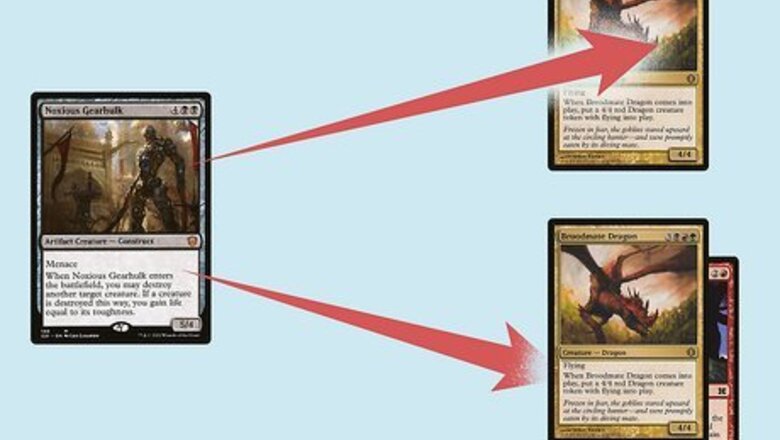
views
- If a creature has menace, it cannot be blocked by one creature. The blocking player must place at least two blockers in front of it.
- If a menace creature is blocked, the attacking player chooses how the damage is assigned to each of the creatures.
- Menace is a very common keyword. It mainly appears on black and red creatures, but every color has access to cards with menace.
How does Menace work?
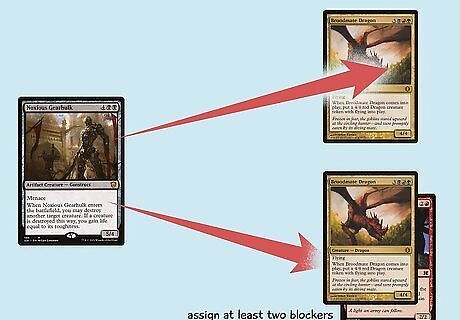
Creatures with menace can’t be blocked by fewer than two creatures. If you attack with a creature that has menace, your opponent cannot block that attacking creature with a single blocker. They must leave the creature unblocked, or assign at least two blockers. They can assign more than that if they’d like, but they just can’t place one blocker. Menace is a static ability. This means it’s just something that’s true all the time and it doesn’t use the stack, which is where casts and triggers go. Menace is an evergreen keyword. In Magic, an evergreen keyword refers to any mechanic that can appear in any set. Other examples include trample, flying, defender, and lifelink. Menace is a type of evasion ability, meaning it makes it harder to block the creature. Other evasion mechanics include flying, shadow, and fear. While menace can appear on any card, it’s most prominently featured in black, red, Dimir, and Rakdos.
How is damage assigned with double blocks?
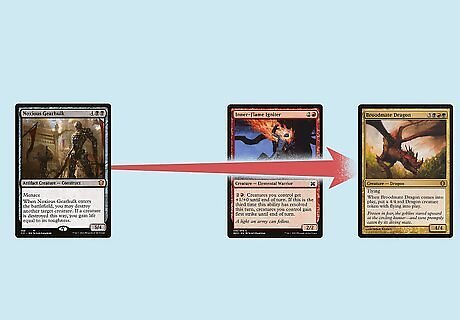
The attacking player chooses how damage is assigned. After blockers have been declared, the attacking player “orders” the blockers by putting them in order of the damage assignment. If you assign lethal damage to the blocker you put in front, the remaining damage spills over to the second creature, then the third creature, and so on. For example, let’s say you attack with a 5/4 who has menace. Your opponent blocks with 2/2 and a 4/4. If you put the 2/2 in front, the 5/4 deals 2 damage to it, which kills it. Then, the remaining 3 damage is assigned to the 4/4. If you put the 4/4 in front, the 5/4 deals 4 damage to it and the remaining 1 damage is assigned to the 2/2. The exception here is if the attacking creature with menace has deathtouch. In that case, the attacking creature only needs to assign 1 damage to each blocker in order to kill them. So, a 4/4 with menace and deathtouch being blocked by two 5/5s would kill each 5/5. If the 4/4 had trample, it would even deal 2 damage to the opponent!
What happens if one of the blockers is destroyed?

If a blocker is destroyed before damage, the block is still legal. Let’s say you attack with a creature with menace and the opponent puts two creatures in front of it. Priority passes to you after your opponent assigns blockers. If you cast a spell like Murder and target one of your opponent’s blockers, you destroy it. The question then stands: if a creature with menace can only be blocked by two creatures and you destroy one of them, what happens? The answer is the block is legal and damage is assigned like normal. Menace only checks the number of creatures who are announced as blockers. If something happens in between the blockers being assigned and damage being assigned, it’s irrelevant (at least as it pertains to menace).
What if a creature with menace can’t be blocked?
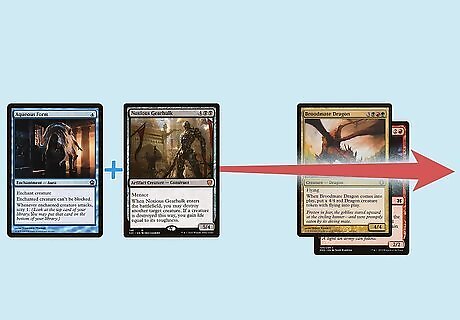
“Can’t be blocked” always trumps menace. Let’s say you put an Aqueous Form on a creature with menace. Aqueous Form says, “Enchanted creature can’t be blocked.” This takes precedence over menace’s condition. The specific wording in Magic: The Gathering matters. Menace literally says, “This creature can't be blocked except by two or more creatures.” Aqueous Form just says the creature “can’t be blocked.” There’s no “except” clause!
Handling Creatures with Menace

Put interactive spells in your deck to remove creatures. In Magic: The Gathering, interaction refers to cards that either counter your opponent’s spells or remove your opponent’s permanents. If a creature with menace is going to give you trouble, you can always counter it with a card like Counterspell or Mana Tithe. Alternatively, you can just remove it from the battlefield with a Dismember or Lightning Bolt. Every color has access to great interaction but green. White has enchantment-based removal, blue has counters, red has burn, and black has removal. If you’re in green and you badly need removal, the only real versatile option is Beast Within.

Consider a tutor to find answers to tough creatures. In Magic: The Gathering, a tutor refers to any card that finds another card in your deck. If you want a solid answer to a menace creature, put one in your deck and include a few tutors. If you never run into a creature with menace, tutor for other stuff. If you do end up facing down a brutal creature that can’t be blocked, tutor for the removal spell you need! Popular tutors include Demonic Tutor, Worldly Tutor, Vampiric Tutor, and Gamble.
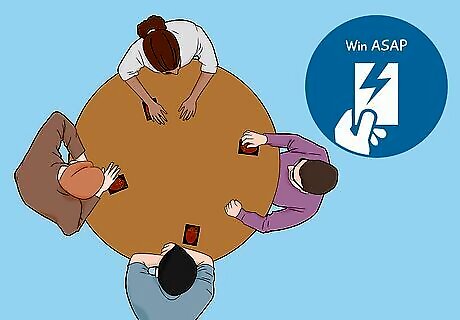
Play a faster gameplan to keep menace from mattering. Combo decks and aggro decks will often skip interaction. This is because these archetypes are just trying to do their own thing and they don’t necessarily care what the opponent is up to. Don’t feel like worrying about strong creatures with menace on your opponent’s side of the board? Just win before their creatures matter!
The History of Menace

Menace was released in Magic Origins to replace intimidate. There are two abilities that resemble menace: intimidate and fear. Intimidate requires blockers to be the same color as the attacking creature, and fear requires blockers to be black or artifact creatures. Both mechanics were a little too swingy and difficult to deal with, so Magic designers shifted away from intimidate and fear to use menace instead. Fear and intimidate were really powerful abilities. Menace is a lot less potent, which is why it’s rare you’d see players build a deck around it. The menace effect used to be called the “goblin war drum ability” since Goblin War Drums was the first card ever printed to reference the ability that would go on to become menace.

















Comments
0 comment